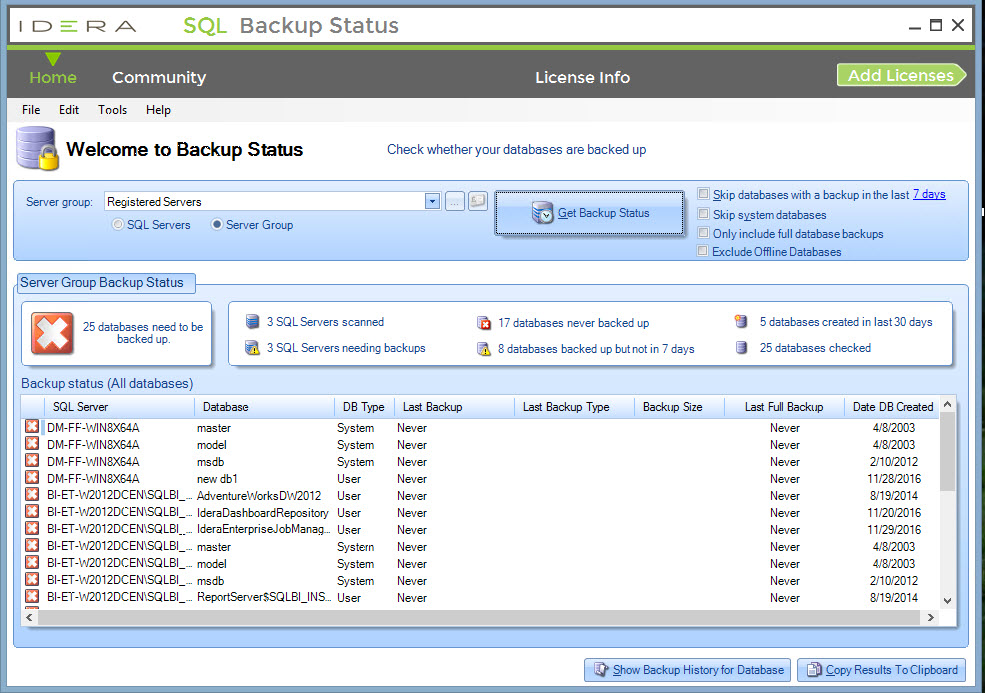Keep sensitive and mission-critical data safe by performing regular backups of all important databases.
- Identify any non-backed up databases.
- Determine which databases are not backed up within the last specified number of days.Display the last backup time stamp for each database.
- Display the last backup time stamp for each database.
- Drill down into the complete backup history for a specific database.
- Display the history of backups across multiple instances or a server group.
- Save the history of backups.
With the Backup Status tool of SQL Admin Toolset, check the status of backups of databases on SQL Server instances.
This is how easy it is:
- Connect to one or more instances.
- Specify the options:
- Skip databases that include a backup performed in the past specified number of days.
- Skip backing up system databases.
- Include only databases that include a full database backup.
- Exclude all offline databases from the backup status check.
- Display the status of the backups.
- Select a database to view its history of backups.
- Copy the results to the Windows Clipboard, and save the results as an XML and CSV text file.
Watch the video for more details:
Try this yourself by downloading the free 14-day trial of SQL Admin Toolset.
